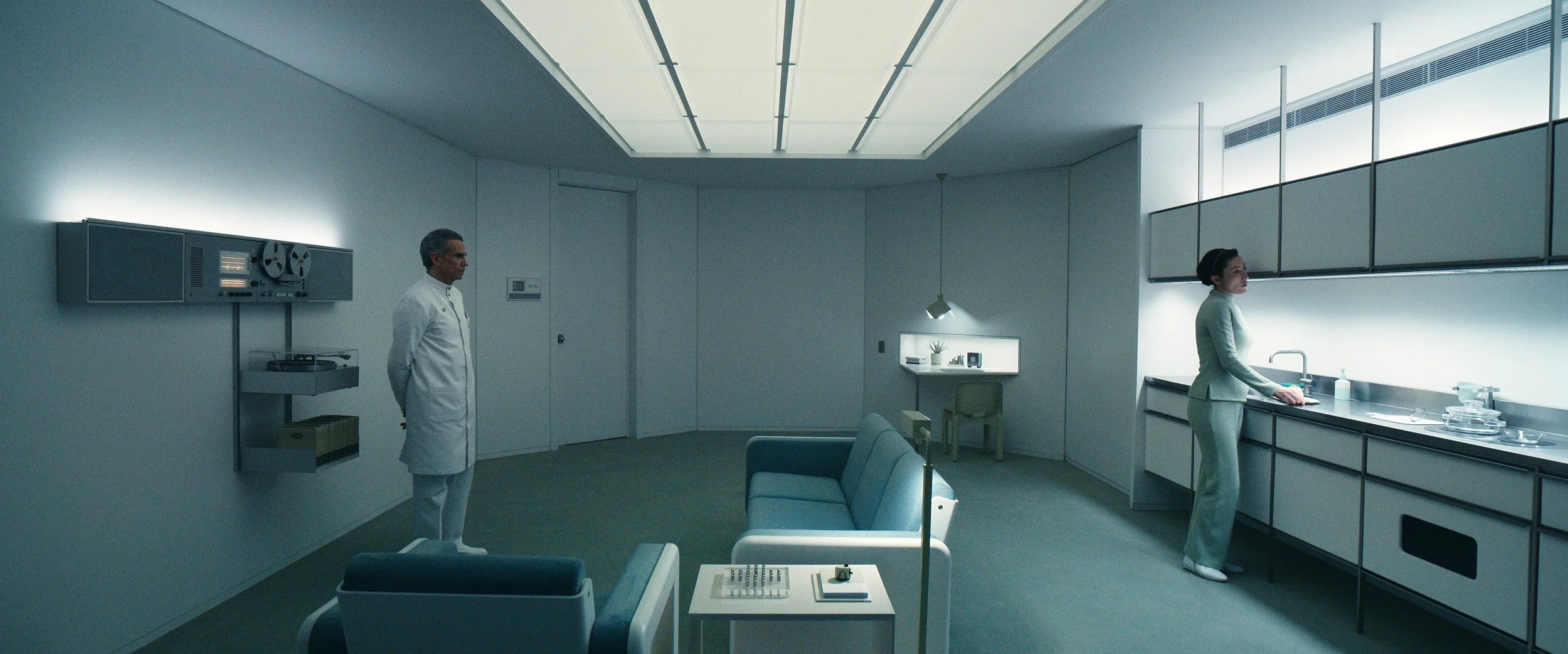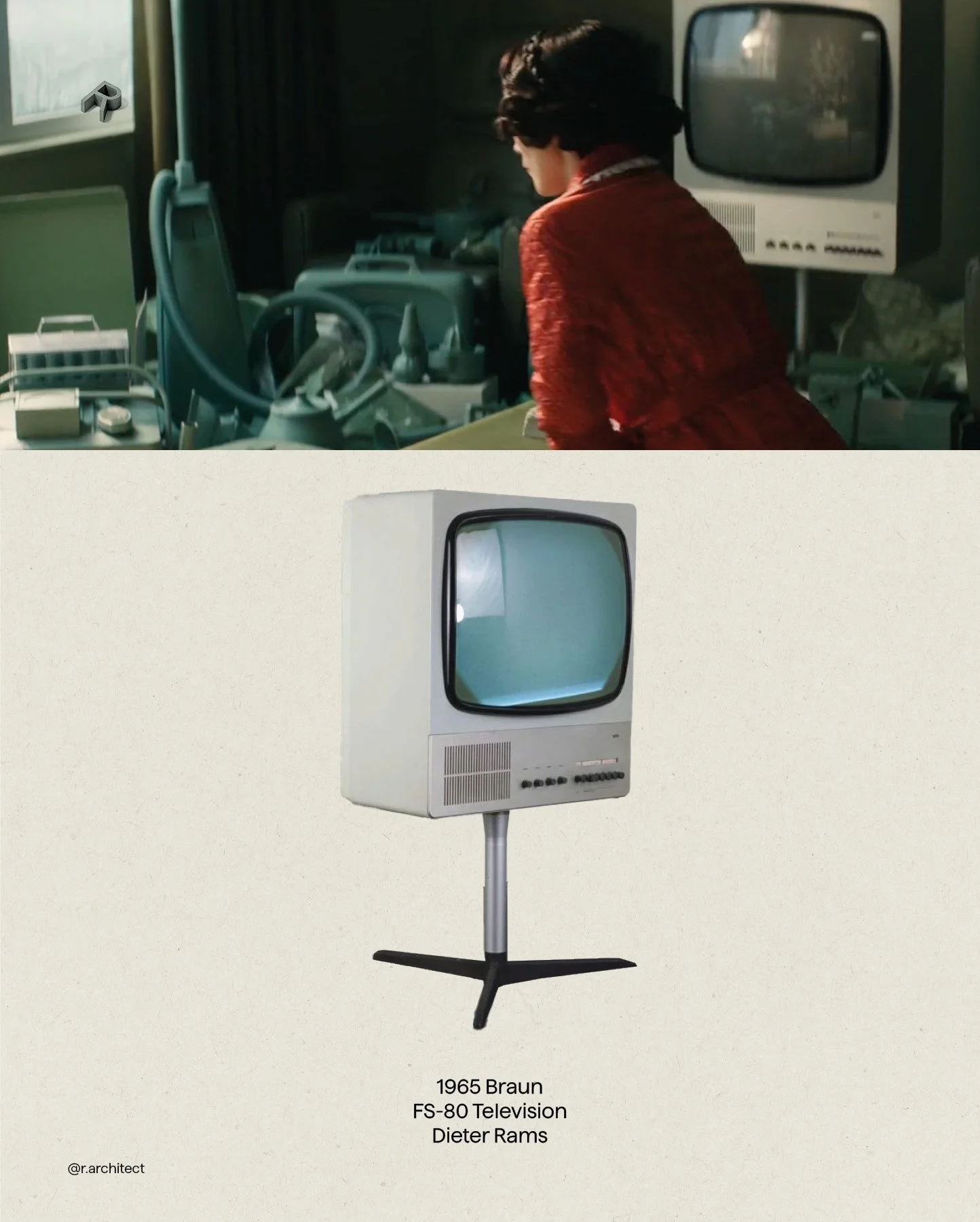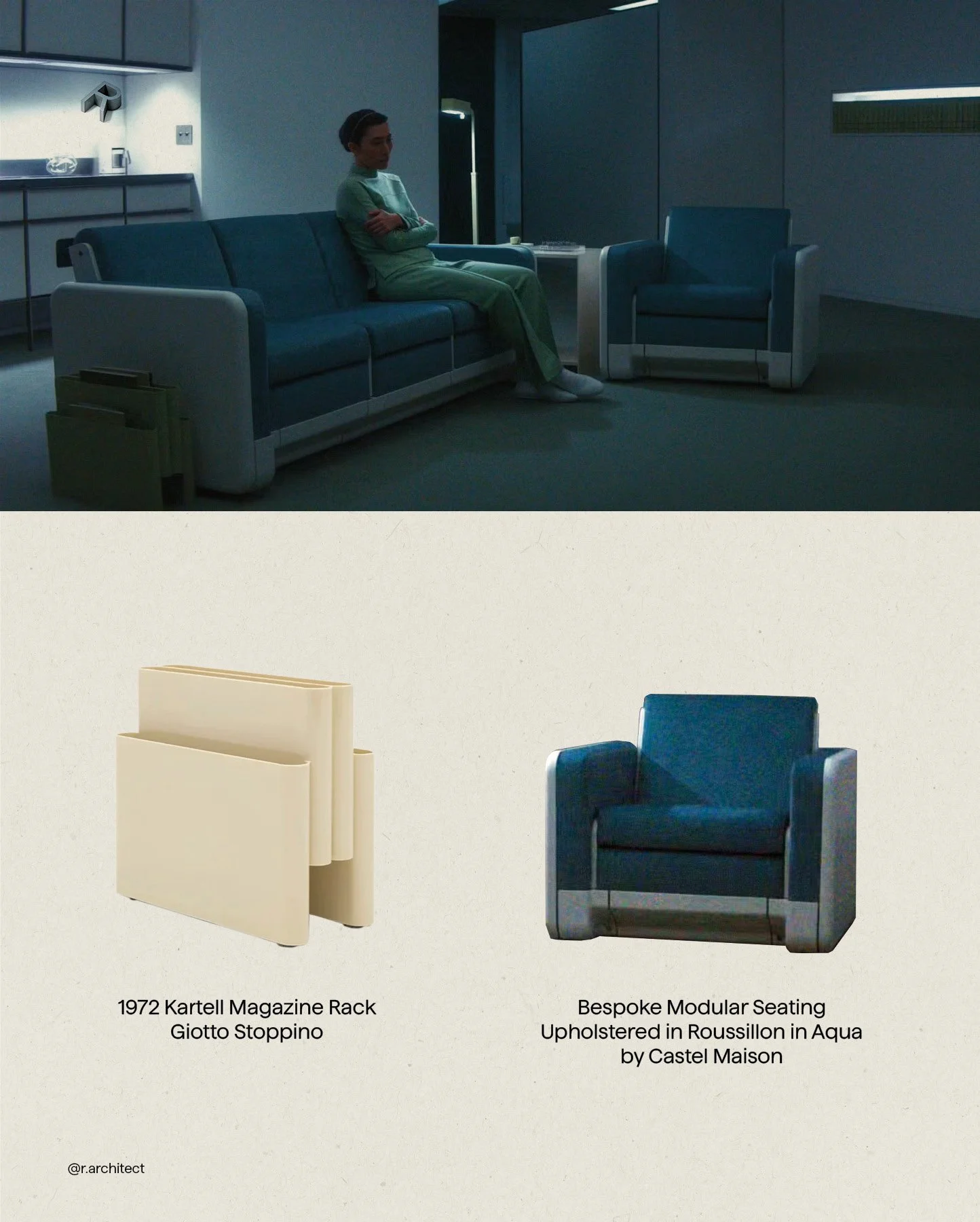Severance Interior Design: The Testing Floor at Lumon
Set Decorator: David Schlesinger
Production Designer: Jeremy Hindle
Prop Master: Cat Miller
Stills: Apple TV+
Episode: Season 2 - Episode 7, ‘Chikhai Bardo’
This is the fourth post in my series analysing the interiors of Severance, focusing on the furniture and spatial design choices across key locations. Previous posts:
While my earlier posts explored Severance’s residential interiors, this one turns to the Testing Floor, a clinical and contained space defined by white walls, surgical green upholstery, and modular furniture curated by set decorator David Schlesinger. The repeated use of interchangeable pieces creates an environment focused on routine and control rather than comfort.
Image credit: Apple TV+
The Testing Floor features mostly modular furniture with interchangeable parts. Key pieces by Dieter Rams, Luigi Massoni, and Joe Colombo shape the space. Though their styles differ, they all focused on systematic, user-centred design.
Dieter Rams, trained as an architect, applied a modernist mindset to product design. His systems emphasised order, usability, and clarity, stripping devices of visual clutter to focus on core function. The Braun Hi-Fi wall stereo and FS-80 television, both featured in Severance, reflect this approach. His “Ten Principles of Good Design” became a framework for design ethics and are still referenced today.
Joe Colombo, by contrast, envisioned the future. As detailed in Joe Colombo and Italian Design of the Sixties (Ignazia Favata, 1988), he was “consistently brilliant and always formally right,” producing compact, multi-functional objects that anticipated new ways of living. Originally trained as an architect and painter, Colombo turned to furniture and lighting in the 1960s, designing for mobility, space efficiency, and mass production. His Universale chair, Triedro lamp, and Coupé wall light appear in Gemma’s quarters.
Braun Product Range c.1970.
Image Credit: Dieter Rams: As Little Design as Possible by Sophie Lovell (2011)
Dieter Rams designed around 500 products for Braun during his career there, which spanned from the early 1950s until the late 1990s.
Braun Hi-Fi Wall Unit Stereo System, Dieter Rams (1965)
Designed in 1965 for Braun, this modular stereo system was Rams’ attempt to develop audio equipment where the design directly reflected the technology and user operation. In his own words:
“The design of the modular wall system turned out as I had imagined it: to develop a system where the design was more related to technology and operation. In 1965, I installed it at my home. I never removed it. The unit is still functioning and acoustically impeccable.”
— Dieter Rams, 1995
This wall-mounted unit is a rare example of high-fidelity sound integrated with minimalist industrial design. It was never mass produced in large numbers and remains highly sought after by collectors.
(Source: Hi-Fi Wall Units by Braun, Hartmut Jatzke-Wigand, 1995)
Universale Chair, Joe Colombo (1960s)
Originally designed to be made from aluminium, the Universale Chair faced challenges during mould adjustments and manufacturing. It eventually entered production in 1967, made entirely from ABS and polypropylene, the first chair to be moulded from a single material. This innovation allowed for lightweight, affordable mass production without sacrificing design integrity.
(Source: Ignazia Favata, Joe Colombo: Italian Design Sixties, 1988)
The chair is recognised internationally, read more about it on Vitra Design Museum.
Dilly Dally Vanity, Luigi Massoni (1960s)
Designed in the 1960s by Italian designer Luigi Massoni, the Dilly Dally vanity reflects the era’s shift toward playful yet practical personal furniture. Massoni’s pieces were often commissioned for contemporary homes seeking modular and approachable designs that still made a statement.
Coupé Lamp, Joe Colombo (1967)
Made up of a series of elements that can be interchanged. Two lamp bodies are provided with different types of base and stand for free-standing, table, wall and ceiling lamps. It won the International Design Award in 1968.
(Source: Ignazia Favata, Joe Colombo: Italian Design Sixties, 1988)
620 Chair Programme, Dieter Rams (1962)
This seating system allows individual chairs to be connected, transforming into sofas of varying lengths. Armrests, backrests, and bases are interchangeable, enabling customisation to suit different needs. The chair's construction features a hot-pressed sheet-moulding compound shell, coil-sprung mesh interior, and natural materials like coconut fibre and rubber for cushioning.
Reupholstered with Roussillon in Aqua for the show.
(Source: Vitsoe)
Braun FS-80 Television, Dieter Rams (1964)
14" CRT in injection-moulded plastic. Manual controls, no ornamentation. A deliberate move away from the veneered TVs of the era and a clear design ancestor to Apple products.
Triedro Lamp, Joe Colombo (1970s)
The body of the lamp is made up of three pieces cut out of flat sheet metal, bent and assembled in such a way as to create the characteristic trihedral shape; it can be mounted on various stands to form a complete lighting system.
(Source: Ignazia Favata, Joe Colombo: Italian Design Sixties, 1988)
Kartell Magazine Rack, Giotto Stoppino (1972)
Originally trained as an architect, Stoppino brought his understanding of form and repetition into industrial design. This 1972 magazine rack was produced by Kartell in injection-moulded ABS, the same plastic used for LEGO bricks.









